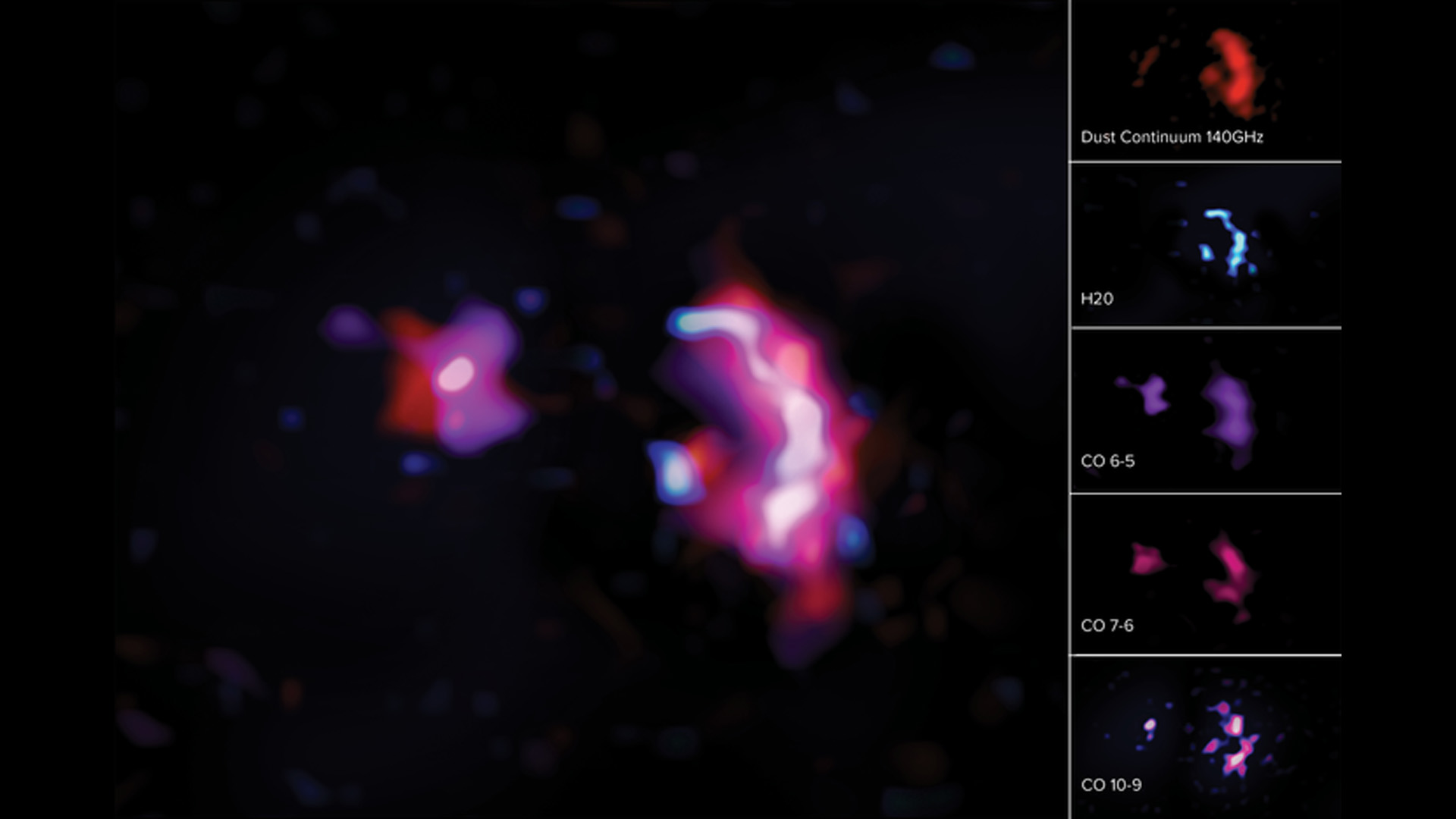Astronomers detect water in one of the oldest known galaxies

Astronomers have detected traces of water in one of the oldest known galaxies, proving for the first time that the life-giving substance played a role in the formation of the earliest stars.
The galaxy, called SPT0311-58, is located some 12.88 billion light-years from Earth, which means that telescopes see it as it looked like only 1 billion years after the Big Bang.
Astronomers estimate that the galaxy is only 780 million years old, an age at which stars formed at a much higher rate than they do in more mature galaxies.
The observation, the most distant (and oldest) detection of water in the universe, was made by the Atacama Large Millimeter/submillimeter Array (ALMA), a powerful radio telescope consisting of 66 radio antennas located in northern Chile in the Atacama Desert.
In addition to water, ALMA also detected carbon monoxide in this galaxy.
Related: Scientists think they've spotted the farthest galaxy in the universe
"Using high-resolution ALMA observations of molecular gas in the pair of galaxies known collectively as SPT0311-58 we detected both water and carbon monoxide molecules in the larger of the two galaxies," Sreevani Jarugula, an astronomer at the University of Illinois and the principal investigator on the new study, said in a statement. "Oxygen and carbon, in particular, are first-generation elements, and in the molecular forms of carbon monoxide and water, they are critical to life as we know it.”
Breaking space news, the latest updates on rocket launches, skywatching events and more!
SPT0311-58, discovered by ALMA in 2017, is the most massive currently known galaxy of this ancient age and, in fact, consists of two galaxies that appear to be merging. It has more gas and dust compared to galaxies at closer distances, which are more mature, scientists said in the statement.
"[SPT0311-58] gives us plenty of potential opportunities to observe abundant molecules and to better understand how these life-creating elements impacted the development of the early universe," Jaragula added.
Astronomers currently don't understand how such a huge amount of gas and dust assembled in the young universe to form first stars and early galaxies. They, however, know that stars in young galaxies form at a thousand times greater rate than in the Milky Way, Jaragula said.
"Studying the gas and dust content of these early galaxies informs us of their properties, such as how many stars are being formed, the rate at which gas is converted into stars, how galaxies interact with each other and with the interstellar medium, and more," he said.
Water is the third most common molecule in the universe after hydrogen and carbon monoxide and some studies suggest that it might be used as a signature of star formation.
"This exciting result, which shows the power of ALMA, adds to a growing collection of observations of the early universe," Joe Pesce, an astrophysicist and ALMA Program Director at the National Science Foundation, said in the statement. "These molecules, important to life on Earth, are forming as soon as they can, and their observation is giving us insight into the fundamental processes of a universe very much different from today’s."
The study was published in The Astrophysical Journal on Wednesday (Nov. 3).
Follow Tereza Pultarova on Twitter @TerezaPultarova. Follow us on Twitter @Spacedotcom and on Facebook.

Tereza is a London-based science and technology journalist, aspiring fiction writer and amateur gymnast. She worked as a reporter at the Engineering and Technology magazine, freelanced for a range of publications including Live Science, Space.com, Professional Engineering, Via Satellite and Space News and served as a maternity cover science editor at the European Space Agency.

